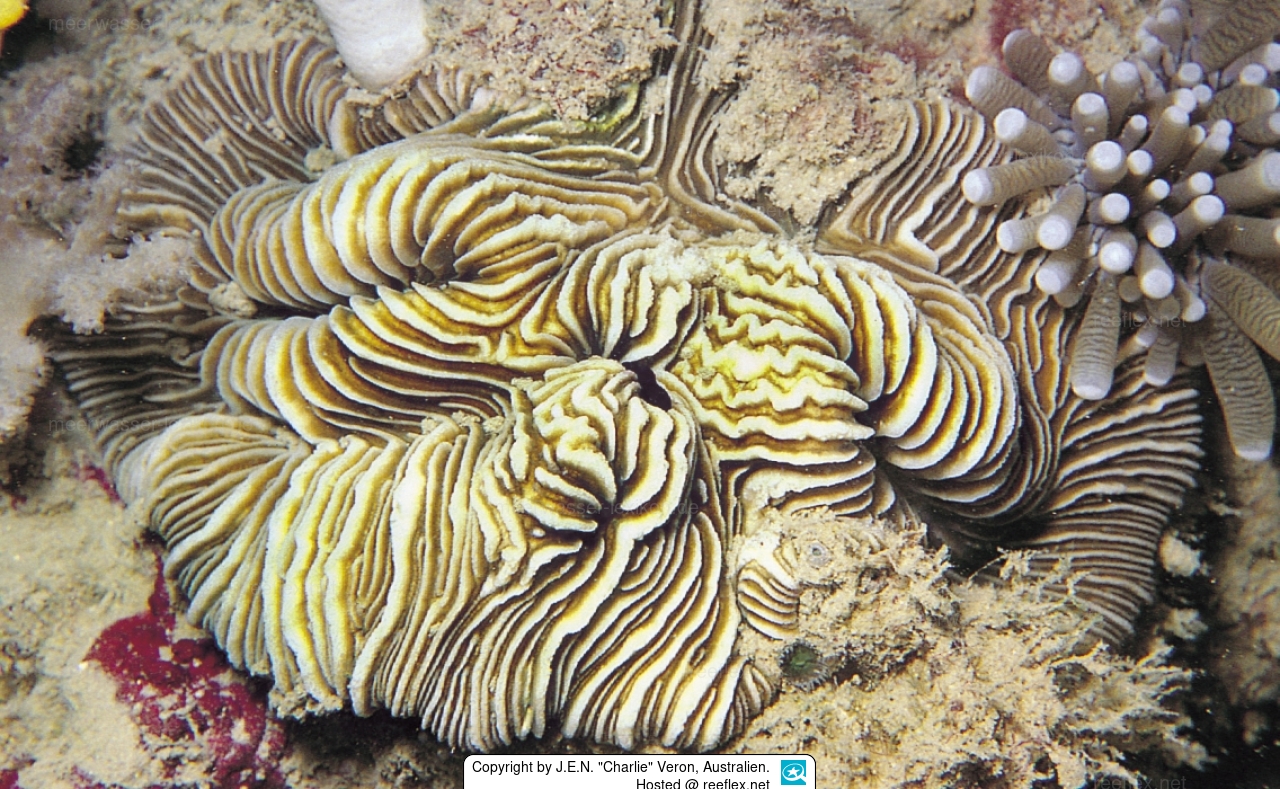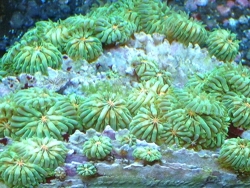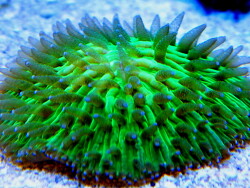Info
“From J.E.N. Charlie Veron, Corals of the World.”
Correct name according to sealifebase: Fungia moluccensis (Horst, 1919)
Correct name according to WoRMS: Pleuractis moluccensis (Van der Horst, 1919)
Polyps are usually attached to or encrust the substrate. They may be shaped like Fungia paumotensis but are commonly contorted. They usually have a strong central arch. In specimens which are not contorted, primary septa extend from the mouth to the perimeter. Secondary mouths are sometimes formed. Costae are irregular. An attachment scar is usually prominent.
Colour: Brown, cream or mottled.
Habitat: Reef slopes and turbid environments.
Abundance: Usually uncommon.
Similar species:
Taxonomic note: Source reference: Veron (2000). Taxonomic references: Veron and Pichon (1980), Hoeksema (1989). Additional identification guides: Veron (1986), Sheppard and Sheppard (1991), Nishihira and Veron (1995).
Synonyms:
Fungia (Cycloseris) pseudoechinata Gerth, 1925 †
Fungia (Pleuractis) moluccensis Van der Horst, 1919
Fungia moluccensis Horst, 1919
Classification: Biota > Animalia (Kingdom) > Cnidaria (Phylum) > Anthozoa (Class) > Hexacorallia (Subclass) > Scleractinia (Order) > Fungiidae (Family) > Pleuractis (Genus) > Pleuractis moluccensis (Species)







 Dr. John Edward Norwood "Charlie" Veron, Australien, Australien
Dr. John Edward Norwood "Charlie" Veron, Australien, Australien









